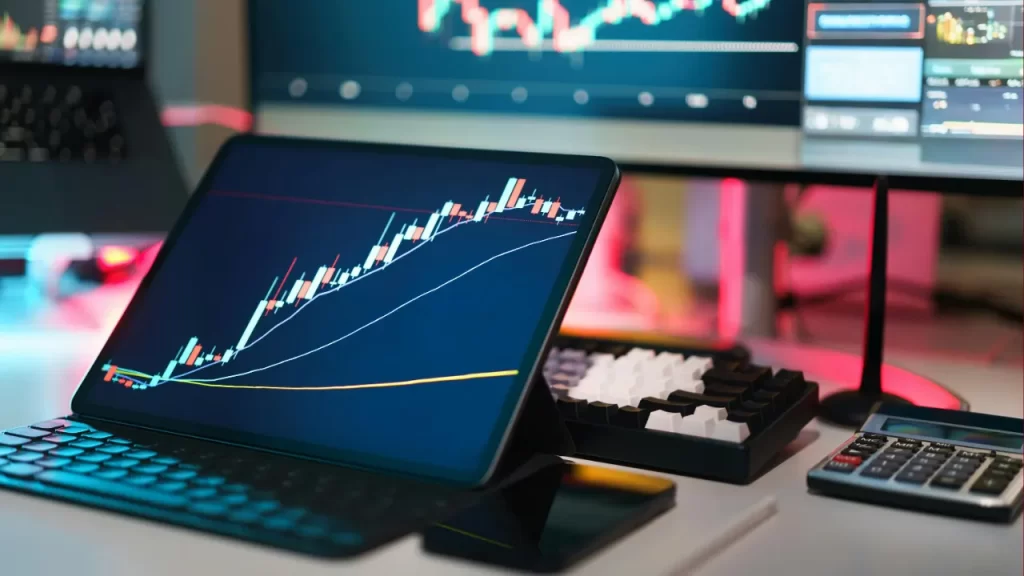If you’re just starting out in CFD trading, you’ve probably heard the word “leverage” mentioned frequently.
It’s one of the core concepts in CFD trading—but it’s also one of the most misunderstood.
In this guide, we’ll explain what leverage is, how it works in CFD trading, and how it can impact your trades, both in terms of profits and losses. By the end, you’ll understand how to use leverage responsibly and avoid common mistakes.
What Is Leverage in CFD Trading?
Leverage allows you to open a larger trade position than your available capital would normally permit. It’s essentially a form of borrowing from your broker to increase your exposure in the market.
When you use leverage, you only need to deposit a small percentage of the full trade value this is called the margin.
For example:
If you want to open a trade worth R10,000 and your broker offers 1:10 leverage, you only need R1,000 in margin to control that position.
How Leverage Works: A Simple Example
Let’s say:
- You have R2,000 in your trading account.
- Your broker offers 1:20 leverage.
- This allows you to trade a position worth up to R40,000.
If the market moves 5% in your favour, your profit would be R2,000 (on the full R40,000 position).
But if the market moves 5% against you, you would lose R2,000—your entire account.
Leverage amplifies both gains and losses.
Why Do Traders Use Leverage?
Leverage is attractive because it:
- Allows traders to open larger positions with less capital.
- Increases the potential return on small price movements.
- Makes trading accessible to those with limited funds.
It’s especially popular in forex and index CFD trading, where markets often move in small percentage increments.
How Leverage Affects Your Trade
1. Magnifies Profits
Even a small price change can generate a meaningful profit because you’re trading a larger amount than you deposited.
2. Magnifies Losses
Losses are also calculated based on the full trade value, not just your margin. This means your account can be wiped out quickly if the trade goes against you and no stop-loss is in place.
3. Affects Risk Management
Higher leverage requires tighter risk control. One mistake or sudden market movement can trigger margin calls or stop-outs.
4. Influences Your Position Size
The amount of leverage impacts how large your positions can be. Always calculate your position size based on your risk limit—not just how much leverage you have available.
What Is a Safe Leverage Ratio for Beginners?
If you’re new to CFD trading, it’s best to start with low leverage. Many experts recommend staying between 1:5 and 1:10, even if your broker offers higher ratios.
Why? Because lower leverage:
- Reduces the size of potential losses
- Gives you more breathing room in volatile markets
- Encourages responsible trading habits
Some FSCA-regulated brokers in South Africa may limit leverage based on the asset class or your experience level—this is a good thing for beginners.
Key Tips for Using Leverage Wisely
- Start small. Use the minimum leverage required to execute your strategy.
- Always use stop-loss orders to control your downside.
- Know your margin requirement and monitor your free margin.
- Test your strategy in a demo account before applying real leverage.
- Never risk more than 1–2% of your total account balance on a single trade.
Leverage and Regulation in South Africa
In South Africa, CFD brokers are regulated by the Financial Sector Conduct Authority (FSCA). Regulated brokers are required to disclose margin requirements and risk warnings clearly.
Some international brokers may offer higher leverage than local ones—but remember: more leverage doesn’t mean better trading results. It simply means more risk.
Always ensure you’re trading with a licensed broker and understand the terms before opening leveraged positions.
Final Thoughts
Leverage is a double-edged sword. It can help you amplify returns and grow a small account faster—but it can also lead to rapid losses if misused.
The best approach is to use leverage conservatively, especially when you’re still learning how the markets work.
Focus on managing risk, protecting your capital, and building consistent habits. Leverage is a tool—how you use it determines your outcome.






